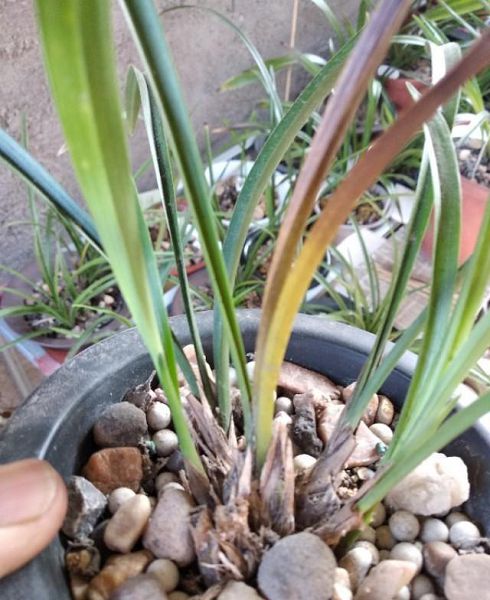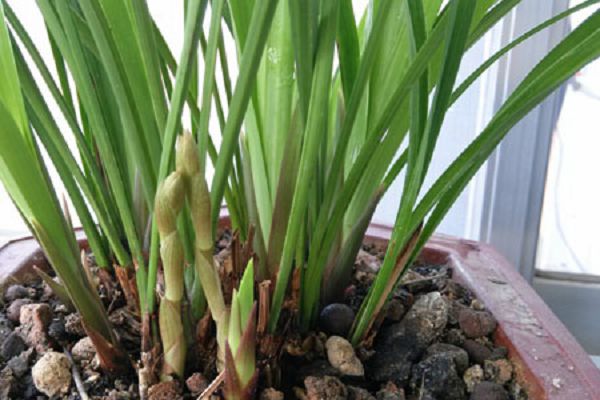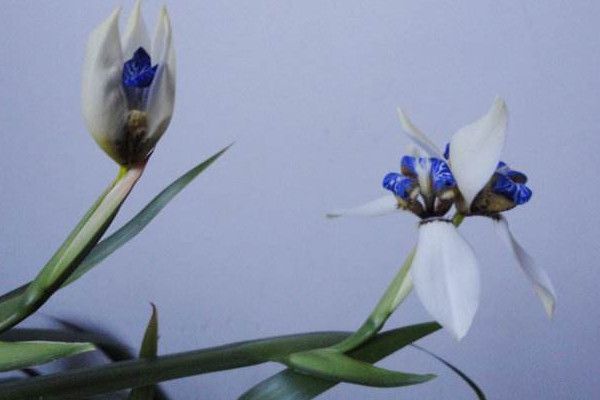The yellow leaves of orchids retreat from the grass, and it is easy to water and fertilize the yellow leaves to turn green.

The phenomenon of grass withdrawal in Mo Lan often occurs. The incidence of childhood is usually higher in March and April of spring. In fact, it is not just ink orchids, other strains of orchids also often occur in the spring.
The phenomenon of grass withdrawal of orchids usually occurs on old seedlings that are two to three years old or even older. It's supposed to be normal. If a pot of orchids with more than ten or twenty seedlings returns two or three seedlings within two or three years, if the rate of returning grass is not very high, it will not be a big deal. As long as the daily management is strengthened, the rate of grass withdrawal will be reduced to a minimum. So, what method is used to adjust the returning grass of orchids? We can spray appropriate amount of foliar fertilizer and medicine (growth regulators) before orchids blossom. For example, the flowering period of Chunlan and Mulan is from November to February and March of the following year. Before the orchid draw arrows, we can spray twice potassium dihydrogen phosphate solution (5vv 1000 concentration) and NAA diluent (concentration 1RV 2000 to 2VR 2000). The interval between two times is seven to ten days. When spraying, we mainly spray the back of the old plant leaves and pseudobulbs to avoid spraying inside the leaf center. It can effectively prevent the old seedlings from returning grass.
The phenomenon of returning grass to old orchid seedlings is mainly based on prevention and control. The leaves of the old seedlings have been yellowed to wither, which can be reduced and cleaned up. This normal phenomenon of seedling withdrawal is generally just the yellowing of the leaves, while the false bulbs are still alive and fresh green. So don't worry.
In the daily management of orchids, the quality of plant growth is closely related to watering, light, fertilization, environmental humidity and pest control. However, as far as the grass withdrawal rate of orchids is concerned, it is directly related to fertilization. No matter in the network or in books and materials, in the types of fertilizer used in orchids, phosphorus and potassium fertilizer is mostly recommended. " "giving priority to phosphorus and potassium fertilizer" does not mean that fertilizers of nitrogen and other elements cannot be used. Therefore, it more or less misled orchid friends to ignore the use of nitrogen fertilizer in the fertilization of orchids. Due to the lack of nitrogen in orchid plants for a long time, it is also one of the reasons for the increase of grass regression rate of old seedlings of orchid plants. Therefore, in the daily management, while implementing phosphorus and potassium fertilizer to orchid plants, it is also necessary to timely and appropriately increase some nitrogen fertilizer. In order to prevent the transport tissue of the old seedlings from declining ahead of time, so as to make the old plants return to the grass.
- Prev

What is the best soil for orchid cultivation and what soil allocation schemes are there?
What is the best soil for orchid cultivation and what soil allocation schemes are there?
- Next

How to raise sword orchids and pay attention to controlling the amount of water
How to raise sword orchids and pay attention to controlling the amount of water
Related
- Is the orchid suitable for indoor use? Is it good for the body?
- How to prevent the empty root of orchids?
- What to do after the crab claw orchid is withered?
- Why are the leaves of orchids always yellow? Fertilizing and watering.
- Can the root of the gentleman orchid be saved if it is rotten?
- Diagnosis and treatment of cotton-blowing beetle insects in Cymbidium
- There is a way for a gentleman's orchid to rot.
- What is the most suitable temperature and humidity for the orchid?
- How to raise a gentleman's orchid? Cultivation techniques of Cymbidium
- How to prepare the nutritive soil for the cultivation of Cymbidium

